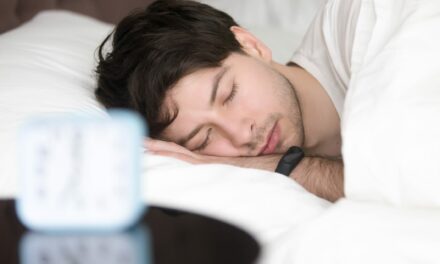With new CMS guidelines going into effect on April 1, sleep specialists will have a secure set of rules for fee schedules and CPAP compliance

The previous Centers for Medicare & Medicaid Services (CMS) guidelines for nasal CPAP reimbursement covered individuals who met very specific respiratory and sleep criteria (Ž30 episodes of apnea, with a duration of Ž10 seconds, during more than 6 hours of recorded sleep). These criteria were developed to identify those who had moderate to severe disease. The criteria were restrictive since we all have patients who have nothing but hypopneas (albeit 100/hour), 28 apneas, events that last only a few seconds, and events with a 3% desaturation or mild obstructive sleep apnea (OSA) with severe associated hypersomnia. These individuals could not receive a CPAP machine from CMS and in some instances could not get a CPAP titration. Also, since many third-party payors follow CMS’s lead, many other patients were affected as well. Fortunately, the apnea rule has been reconsidered and new guidelines have been published, thanks to the tireless work of professional associations, manufacturers, and clinicians.
New Criteria
The new criteria for CPAP coverage include either of the following:
1) An apnea-hypopnea index (AHI) of Ž15 events per hour, or
2) An apnea index Ž5 and 14 events with documented symptoms including excessive daytime sleepiness, impaired cognition, mood disorders, or insomnia, or documented hypertension, ischemic heart disease, or history of stroke.
• AHI is defined as the average number of episodes of apnea and hypopnea per hour based on a minimum of 2 hours of sleep recorded by polysomnography using actual, not projected, hours of sleep.
• Apnea is defined as a cessation of airflow for at least 10 seconds.
• Hypopnea is defined as an abnormal respiratory event, lasting at least 10 seconds with at least a 30% reduction in thoracoabdominal movement or airflow as compared to baseline, with at least 4% oxygen desaturations.
• Polysomnography must be performed in a facility-based sleep laboratory.
A full version of this coverage decision can be found at www.hcfa.gov/coverage/8b3-bbb.htm.
It should be noted that these new guidelines might still allow for a sleepy person (those who had respiratory arousals only) who could benefit from CPAP to slip through the cracks; however, we all must applaud these tireless efforts and continue the battle.
Physicians should also understand the coverage criteria for home-based bilevel PAP machines. The necessary criteria for bilevel PAP prescription are: 1) A facility-based, attended polysomnogram with an established diagnosis of OSA, and 2) a single-level device (E0601, CPAP) that has been tried and proven ineffective. There does not appear to be a definition of what ineffective may mean. Once this situation is documented by a physician, bilevel PAP should be easily obtained (in some states for only 3 months—check with your local provider). We at SCMI have found practices that have identified those patients who have suffered from the apnea rule in the past and simply tried CPAP (loaned to them by the physician or local durable medical equipment [DME] company) and had it fail. At that point, the practice would request a bilevel PAP with a 0-1 cm difference between the inspiratory and expiratory pressures—in essence, creating a CPAP and thus allowing the patient to receive treatment despite not having 30 apneas. These practices were found to be legal in these states; however, the obvious intent was to skirt around the apnea rule. Although these practices were legal, ethics may prevent their use in a sleep center.
The new CMS guidelines for CPAP treatment will take effect on April 1, 2002, and will not be retroactive. Thus, the old apnea rule stands until March 31. The fact that these new criteria are not retroactive may represent an interesting opportunity for possible increased revenue. That is, if a practice were able to identify CMS patients who previously did not get a CPAP, but still have symptoms of sleep disordered breathing, a polysomnogram and/or subsequent CPAP titration may be in order. In some states, CMS requires that a diagnostic study be no older than 90 days. Generally, these studies do not require precertification. Therefore, some practices seem to be identifying these patients, contacting them, seeing if they are still symptomatic, and trying to get a diagnostic sleep study and eventually a CPAP titration. It should be noted that there are no clear data on whether this strategy will work, and it may be necessary to review payout of services before continuing on a large scale. These criteria may also represent a possible increased revenue for DME companies as well.
With these new guidelines, CMS has also requested that carriers develop a method for monitoring compliance for CPAP devices. Although this is the first request by CMS, this is not something new for many carriers. For example, compliance programs are often included in contract negotiations, and carriers will hold payment until compliance has been established. The definition of compliance may vary from carrier to carrier. In dealing with contract negotiations for many sleep centers, we have offered several different programs to validate compliance for the company as well as payment for the sleep center or DME provider.
Treatment Compliance
When developing a treatment compliance program, it is important to remain ethical yet not forget financial reality. Many centers will purchase a pool of either smart PAP devices or CPAP machines with compliance monitors (computerized CPAP machines that monitor patient use), to be used during a trial period to record CPAP use by the patient. Once a time frame has been agreed upon and met (45-90 days) with an acceptable use period per night (6-8 hours) and the patient meets these requirements, a “permanent unit” is given to the patient and billed to the company. It is essential that terms be developed for CPAP failures including payment for disposable items (mask, hose, headgear, and filters), or else the DME provider may end up eating the cost. It may also be cash-flow negative since the practice or DME company will need to purchase the compliance units, and wait on payment for the permanent units. Sleep centers that wish to participate in DME sales (where it is legally possible) also need to evaluate what tools they are giving the patients so the patient has a reasonable chance to be compliant. For example, are centers giving desensitization directions (for claustrophobic patients), advice on common problems, continued follow-up by the clinician or CPAP clinic coordinator, or products that may enhance compliance (humidifiers, nasal pillows, or chin straps). If these measures are not in place, a center’s record of CPAP compliance may not reflect its true potential. This could also translate to decreased final sales.
Follow-Up
Another possible revenue stream is CPAP follow-up. Depending on how you negotiate your contract, someone who is properly trained (at the physician’s office or sle
ep center) can bill a CPT code 94660 (CPAP initiation and management). There is no definition of what management means; therefore, it can be cautiously used for further follow-up. This is not like a subsequent days code, which is used when patients are on a ventilator and settings need to be changed. This is for further management. Generally speaking, this code may bring in between $40 and $60 for CMS rates but may be as high as $170 for a standard fee per visit. A reasonable follow-up schedule would consist of 1 week post-treatment initiation, then 1 month, 3 months, and once every 6 months from then on.
Conversion Factor
In another recent turn of events, CMS announced that the 2002 conversion factor for the physician fee schedule would be cut by 5.4%, from $38.26 to $36.20. If you remember from my first article, “Reimbursement Part I,” that appeared in the summer 2001 issue, where the proposed changes in relative value units (RVUs) for sleep services (CPT service codes) were listed, these RVUs were multiplied by a conversion factor to yield a fee. These fees are often the benchmark many insurance companies use to determine what they are willing to pay for sleep services (115% of Medicare). The formula for developing this factor is largely dependent on gross domestic product (GDP) increases. Since the GDP has declined over the past few years, however, we are now seeing a reflection of this decline in the conversion factor. This factor is used for all physicians and all services. It should be noted that physicians have received increases in fees over the past 2 years. This new situation will cause a decline in fees by roughly 6%. The statistics reflecting an estimate of what these cuts will do to current average Medicare rates for sleep services can be found in the AASM Bulletin, Winter 2002, Volume 9, No. 1, and in the recently published CMS fee schedule.
Conclusion
These cuts are thought to begin immediately; however, there is a tremendous amount of resistance to these changes by physicians and hospitals alike. The American Academy of Sleep Medicine (AASM) has joined with the American Medical Association and several other specialty societies asking Congress to address these issues. There are now two bills, S1707 and HR3351, which give well-documented reasons why the conversion factor should actually increase by 0.9%, changing the conversion factor to 37.90. However, Congress did not review either bill before the session ended. I have seen that the AASM has made it quite easy to get more involved in the fight to increase the conversion factor by going through their Legislative Action Center (http://capwiz.com/aasm/issues/ alert/?alertid=95389&type=CO). It should be noted that average fees listed in the previous article are now outdated, due to these new events.
Remember that all the information within this article represents suggestions and does not substitute for sound legal advice. Contact health care attorneys in your state for review of all situations or changes in policy. With CMS requesting information on ways to increase compliance, we may now have found a new era of sophistication. Thus, sleep specialists need to continue to develop and redevelop new practices for compliance, yet still maintain a financially viable sleep center.
Michael J. Breus, PhD, ABSM, is a senior partner and founder of The Sleep Center Management Institute, Atlanta; (888) 556-2203; [email protected]; www.sleepcentermanagement.com.




